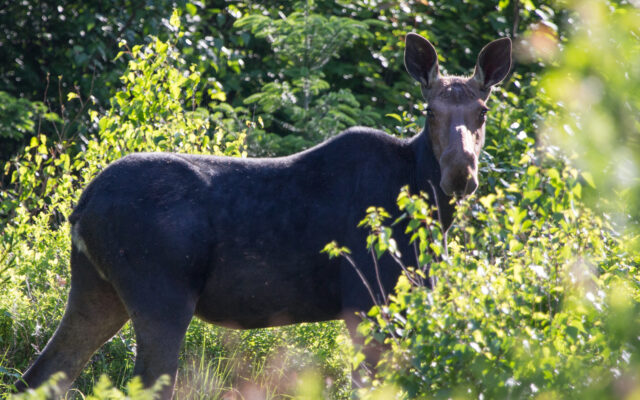
This year’s Maine moose hunt on track to be one of the least successful seasons ever
By Pete Warner, Bangor Daily News Staff
The season isn’t quite over, but this year’s moose harvest is likely to be among Maine’s lowest ever in terms of the percentage of tags filled.
Through Oct. 31, 2,539 moose had been tagged among 3,790 permits so far, according to the Maine Department of Inland Fisheries and Wildlife’s Big Game Harvest Dashboard.
With 240 permits still in play this fall, only 67 percent of hunters have successfully shot a moose. It is possible 2021 will wind up being one of the least successful years, in terms of percentage of permits filled, in the 41 years the state has sponsored a moose hunt since 1980 (there was no hunt in 1981).
In all, 2,539 moose have been taken this year, the most since 2013, but that is contrasted by the fact there were 4,030 permits issued, the second-most ever.
The all-time low harvest (65.3 percent) came in 2014.
The reduced numbers are the result of a warm second week of bulls-only hunting from Oct. 11-16 and a large bump in permits awarded to help facilitate the Adaptive Unit Hunt in Wildlife Management District 4A, a sub-unit of WMD 4.
The lower percentage does not concern moose management experts.
“No, we’re not alarmed at all,” said Nate Webb, the wildlife division director for the DIF&W. “That October bull season, the success rate was quite a bit lower than we typically see, due mostly to the really warm weather. The warm temperatures at night, in particular, reduced movement of bulls a lot.”
That dynamic challenged hunters searching for bull moose that second October week, when only 57 percent of tags were filled statewide. Maine allotted 1,580 permits for the six-day period.
That represents 39 percent of all permits issued this year.
“That relatively low success, compared [with] previous years, for the October bull season is really what sort of pulled the statewide average down across the state,” Webb said.
Since the inception of the Maine moose hunt, nearly 80 percent of hunters have filled their tags. Over the last decade, the success rate is 72 percent.
Hunter success in WMD 4, north of the Golden Road in the North Maine Woods, was again not outstanding during the week of Oct. 11-16. Including the first two weeks of the Adaptive Unit Hunt (Oct. 18-23, 25-30) being conducted in the western part of the zone, only 55.5 percent of hunters there have shot a moose.
Last year, which featured the largest overall harvest by percentage since 2012 (76 percent), the success rate in WMD 4 was slightly higher, 59 percent.
“There’s less road access there and there’s less recent cutting, and clearcutting in particular, and that makes it a bit harder to spot moose,” Webb said.
The all-time record for hunter success came in 1991, when a staggering 959 of 1,000 moose permits (95.9 percent) were filled. But the landscape has changed dramatically with the reduction in large clearcuts where moose could be seen and shot easily from woods roads.
The Adaptive Unit Hunt, being conducted in the western part of WMD 4 as part of a study to gauge how reducing population density might affect the impact of winter ticks, has further pushed the numbers down. An additional 550 antlerless-only permits were made available there, with 200 of those in play this week.
“With those hunters, we do expect and have seen a lower success rate in the 4A hunt than we see for the other antlerless permits,” said Webb, who explained DIF&W had estimated between 40 and 50 percent of those tags likely would be filled.
Webb said in spite of fluctuations in harvest totals, which generally are a function of warm weather that suppresses moose activity, Maine’s hunt still provides an excellent opportunity to pursue the state’s largest game animal.
“For a big-game species, and for moose in particular, we’re still really one of the very highest nationally in terms of success rates,” Webb said.